سحر النعاس
الفصل الخامس: العنف الجنسي و اقصاء النساء: جندرية حكومة ليبيا الجديدة
تواجه المرأة في ليبيا اليوم العديد من التحديات التي تعيق مشاركتها وتمثيلها السياسي والمدني حيث يوفر النظام الأبوي (الذكوري) الجديد Neopatriarchy)) والحرب والصّراع أرضية للعنف القائم على نوع الجنس والعنف الجنسي الذي مازال مستمرًا في أعقاب الحرب (العلي، 2014 وجوراسز، 2013).
بعد مضي ست سنوات على الانتفاضة يشير الوضع الحالي إلى أنّ ليبيا تتجه إلى أن تكون دولة مُفككة (رولف شوارز 2004)[1] وأنّ حقوق المرأة الليبيّة على حافة الانهيار. فقد تعززت الروابط المؤسسية بين الدولة والدّين بسبب عدم الاستقرار والعنف منذ عام 2011 وكان لذلك أثر مدمرعلى المرأة حيث يتجلى ذلك في خطاب التحرير الذي ألقاه مصطفى عبد الجليل[2]. وينعكس هذا الأثر في الانتكاسة المنهجية لحقوق المرأة تحت ستار ديني وعلاوة على ذلك فإن النظام الأبوي الجديد يعزز ويحافظ على القيم الأبوية التي تجعل المرأة في وضع التبعية وبالتالي يقوم بخلق نظام قمعي من خلال روابط مؤسساتية دينية وأخرى متعلّقة بالقرابة. ففي مثل هذه الأنظمة تكون النّساء وأجسادهن وسلوكهن الجنسي غالباً رمزاً يُتمسك به كعلامات على هوية الدولة الدّينية والثقافية، هذه التركيبة أو المعادلة كانت موجودة قبل فترة القذافي حيث حافظ عليها وعزّزها لإغراض سياسية.
سأستكشف في هذه الورقة الترابط بين الجوانب المختلفة لتركيبة الدولة التي تتميز بالنظام الأبوي الجديد وعلاقاتها المؤسسية مع الدّين والقرابة. كما سألقي الضوء على موقف المرأة الليبيّة ومشاركتها وتمثيلها السياسي والمدني والانهيار السريع لحقوقها منذ عام 2011. أزعم أنّ استئثار الدولة ذات النظام الأبوي الجديد بالدّين وعلاقات القرابة والسلطة الأبوية تلعب دوراً هاماً في تراجع حقوق المرأة الليبيّة وسيكون تركيزي على العلاقات المؤسسية بين الدولة والدّين وأثر ذلك على حقوق المرأة في سياق الصّراع ودولة النظام الأبوي. كما سأناقش العنف الجنسي كسلاح في الحرب والارتباط بين عسكرة الذكورة وبنية النظام الأبوي الجديد التي تشكل أساسا للعنف القائم على نوع الجنس من خلال تقليل قيمة المرأة وتعزيز التسلسل الهرمي المبني على الفوارق الجنسيّة. وسأسلط الضوء على مشاركة النّساء الليبيّات في الانتفاضة ضد القذافي عام 2011 والعلاقة بين إقصاء النّساء وطبيعة الانتفاضة كصراع مسلح على السلطة وعلى الموارد الاقتصادية في سياق النظام الأبوي. كما سأستكشف كيف يمكن للنساء الليبيّات من خلال المشاركة والتمثيل المدني أن ينشئن حراكاً نسائياً ويدفعن بالأجندة النسوية إلى الأجندة السياسية ويتغلبن على عوائق “الأولوية الأمنية”.
النظام الأبوي الجديد (Neopatriarchy)
تعريف:
النظام الأبوي الجديد هو الشكل الحديث لمصطلح السلطة الأبوية (patriarchy) والذي تحدد فيه الحداثة في بعض الجوانب البيروقراطية في الدولة. إنّ مجتمع النظام الأبوي الجديد كما يصفه[3] شرابي: “الهجين، تراكيب تقليدية وشبه عقلانية وإدراكية” كما عرف شرابي نوعين من المجتمعات ذات النظام الأبوي الحديث: محافظ وتقدمي وكلاهما يتشارك في ميزة نفسية رئيسية ألا وهي سيطرة الأب (الأبوية) إذا ما كان رئيس الدولة أو أب الأسرة والذي تكون علاقته مع الدولة أو مع الطفل علاقة عمودية بمعنى علاقة هرمية للسلطة “ويكون وسيطها إجماعفروض أو إكراه.” شرابي 1988
النظام الأبوي والحداثة
أحد العوامل الرئيسية في تشكيل الحداثة هو التحول الرأسمالي المستقل والثورة الصناعية في المصطلح الثوري لماركس والذي قاد إلي إزالة الفوارق الطبقية وخلق علاقات اجتماعية أفقية والتي هي أساس الديمقراطية. لم تكن الرأسمالية في منطقة الشرق الأوسط مستقلة ولا ثورية لكي تؤدي إلى تشكيل الحداثة وعلاوة على ذلك فإن غياب التصنيع الحقيقي والاقتصاد الرأسمالي[4] المستقل والعلاقة التابعة وغير المتكافئة بين الغرب كقوة استعمارية مسيطرة ومنطقة مُستعمرة تتميز بتشكيل الدول ذات النظم الأبوية في حقبة ما بعد الاستعمار التي وصفها شرابي قائلا: “الزواج بين الامبريالية والنظام الأبوي “[5].
الدول ذات النظام الأبوي الجديد في الشرق الأوسط وشمال أفريقيا:
وقال شرابي إن تشكيل الدول ذات الطابع الأبوي الجديد في منطقة الشرق الأوسط وشمال أفريقيا شَكلّه الاحتكاك مع الحداثة الغربية في أوائل القرن العشرين[6]. وقد تأسست الحداثة الغربية على طمس النظام القديم للتقاليد والسلطة الأبوية في أوروبا التي أحدثتها الثورة الصناعية والرأسمالية. الرأسمالية المستقلة في تحليل ماركس لظهور البرجوازية كعامل ثوري أقامت علاقات اجتماعية أفقية[7] جديدة تميزت بتشكيل الحداثة الأوروبيّة. المجتمع الحديث الجديد يحكمه المزاج العلماني العلمي للأفكار التي حلّت محل هيكل الحكم الروحي المزاجي الذي ميز أوروبا الإقطاعية ما قبل الحداثة. ويرى بعض العلماء أنّ الحداثة هي ظواهر أوروبية فريدة. وتستند هذه الفكرة إلى خطاب أساسي ثنائي التفرع يقسم العالم إلى أوروبا “المتحضرة”والآخر[8] “الغير المتحضر”. وفي هذا الخطاب تُحجب العوامل التاريخية والجيوسياسية والاجتماعية والاقتصادية الحاسمة.
النظام الأبوي الجديد في ليبيا
تستمد الدولة ذات النظام الأبوي شرعيتها من امتلاك السلطة (شرابي، 1988) إما بالاستيلاء عليها أو أعطائها إياها وفي حالة منطقة الشرق الأوسط وشمال أفريقيا تعتمد سلطة الدولة ذات النظام الأبوي اعتماداً كبيراً في بقائها على أطراف فاعلة خارجية وداخلية.
العوامل الخارجية
يعتمد بقاء الدول في الشرق الأوسط ما بعد الاستعمار وخلال فترة الحرب الباردة على علاقاتها مع القوتين العظميين وتتشكل بالمنافسة بينها[9]. وعلى سبيل المثال لا الحصر مصر (أثناء حكم جمال عبد الناصر) والجزائر وسوريا واليمن الجنوبية السابقة وكانت لليبيا علاقات وثيقة مع الاتحاد السوفيتي السابق الذي قدم لها التكنولوجية والدعم والمساعدة العسكرية والسياسية ومن ناحية أخرى كانت ولازالت هنالك علاقات بين الولايات المتحدة والمملكة العربيّة السعودية والأردن والمغرب ومصر (بعد عبد الناصر) ودول خليجية ريعية أخرى وأيضا لها علاقات مع بلدان أوروبا الغربية التي قدمت لهم المساعدات الاقتصادية (في حالة الدول غير الريعية) والعسكرية والتكنولوجية والسياسية وهكذا لا يمكن وصف أي من دول الشرق الأوسط بأنها دولة حديثة قوية لاعتمادها على القوى العظمى للبقاء ولذلك فإن المراحل والعناصر الأساسيّة في تشكيل الدولة كانت غائبة في حالة الشرق الأوسط. يقول فان كريفلد (1999) لعبت الحرب والتحضير لها دورا[10] أساسياً ومركزياً في تكوين الدولة وتشكيلها في أوروبا الغربية. وعلاوة على ذلك ذكرالعديد من العلماء أن عملية الإعداد للحرب تنطوي على عملية استخراج فعالة للموارد عن طريق آلية بيروقراطية إدارية مؤسساتية لبناء الدولة وبالتالي فانّ الحقوق السياسية وحقوق التمثيل في الحكومة أصبحت جزءا لا يتجزأ من المواطنة التي شملت دافعي الضرائب من مختلف الطبقات الاجتماعية ولم تقتصر على المَلكية أو النخب الحاكمة. وفي هذا السّياق شُكل مفهوم القومية والمواطنة هوية وقوة الدولة بحيث يكون الفرد مواطنا له حقوقه وعليه واجباته وليس “موضوعا” مقيدا بواجبات دون حقوق كما هو الحال في الشرق الأوسط.
يقول كثير من العلماء أنّ تكوين الدولة في الشرق الأوسط ما بعد الاستعمار تشكل على الريعية وللريعية تأثير عميق على “سياسات الدولة الخارجية وسياسة حقوق الإنسان أو جوانب من التداول على السلطة”[11]. فهى تنشئ تسلسلاً هرمياً للمواطنة تكون فيه الثروة والسلطة السياسية مركزية ولا يمكن أن تصلها الاّ النخب الحاكمة فقط وبالتالي تهميش وحرمان الجماهير، هذا الهيكل السياسي الاستبدادي سيطر على الساحة السياسية في الشرق الأوسط ما بعد الاستعمار.
في ليبيا، كمثال على الدولة ذات النظام الأبوي الاستبدادي الريعي فان علاقات القذافي الخارجية مع الاتحاد السوفيتي السابق والولايات المتحدة ودول أوروبا الغربية مثل إيطاليا وألمانيا وفرنسا لم تزوده بالمساعدة العسكرية فحسب بل لعبت دوراً حاسماً في مجالات النفط والإنتاج والنقل والتجارة ومن ثمّ مكّنه ذلك من تجميع رأس مال كان حاسما لبقائه في السلطة على مدى أربعة عقود من حكم ليبيا بقبضة من حديد. لم يستخدم القذافي إيرادات النفط لبناء البنية التحتية في ليبيا أو مؤسسات الدولة مثل التعلىم والصحة والرعاية الاجتماعية ولكن لإنشاء مؤسسات أمنيه تابعه للدولة مهمتها الوحيدة حماية نظامه وضمان بقائه في السلطة. وقد تم تجاهل سجل وسياسة حقوق الإنسان المروعة خلال حكم القذافي إلى حد كبير على الرغم من علم المجتمع الدولي وكانت علاقات القذافي مع شركات النفط مفتاح قوته حيث طالب بمنح كبيرة وشروط عقود صعبة وبحصوله على النّصيب الأكبر من الإيرادات وهدّد بإغلاق الإنتاج إذا رفضت شركات النفط ذلك. وكانت العديد من الحقول النفطية الكبيرة تديرها شركات أصغر لضمان قوة مجزأة عند التفاوض في شروط العقد وكسر خناق شركات النفط الكبرى[12]. وأصبحت ليبيا أول بلد نام تحصل على أغلبية الإيرادات من إنتاجه النفطي ولاستعادة العلاقات المقطوعة مع الولايات المتحدة استخدم القذافي موقفه في السلطة للضغط على شركات النفط الأمريكية للتأثير على السياسات الأمريكية.
بعد الإطاحة بنظام القذافي في عام 2011 لم يكن المُمسكين بالسلطة في ليبيا قادرين على تأمين السيطرة الكاملة على عائدات النفط وأصبح أحد العوامل الرئيسية التي شكلّت نوعية الصّراع في ليبيا.
العوامل الداخلية
تعتمد الدولة ذات النظام الأبوي على الدّين والتقاليد والقرابة والقبلية وهي العوامل الداخلية للبقاء أو مواجهة التحديات ويشمل تعريف شرابي للنظام الأبوي عده أشكال من النظم السياسية في الشرق الأوسط وشمال أفريقيا على سبيل المثال: ليبيا (حتى 2011) والجزائر والعراق (حتى 2003) وسوريا وجنوب اليمن سابقا دول اشتراكية استبدادية وإيران والسودان دول متطرفة إسلامية والمملكة العربيّة السعودية والمغرب دول محافظة ذات سلطة أبويه وتركيا وتونس ومصر هي دول بها خصخصة استبدادية[13] وتتقاسم جميع هذه الدول التأثير الثقافي والدّيني الشامل على المدونة الشخصية المرسخة بعمق في القيم الأبوية ويتشارك الكثيرون في التأثير العميق لثقافة القرابة والقبيلة في الحياة الاجتماعية بالإضافة إلى ذلك كثيرا ما تتعرض حقوق المرأة للخطر وتستخدم كورقه مساومة من الدولة ذات الطابع الأبوي لتوطيد سلطتها وتخضع الهيئات النسائية وسلوكها لمراقبه وتمحيص الدولة للمحافظة على النظام الاجتماعي[14].
وكانت القوه التي يمتلكها القذافي كزعيم للدولة تهيمن على كل من المجالين الخاص والعام من خلال تلاعبه وسيطرته الكاملة على المؤسسات الدّينية والقبلية وعلاقات القرابة حيث كان أثناء حكمه يمسك بزمام الإيرادات النفطية لاستيعاب المصلحة السياسية لنظامه. وفي غياب الخدمات العامة الكافية والمعدل المعقول للمرتبات تحول الليبيون المحرومون من الانتخابات والفقراء إلى الهيكل الاجتماعي الأساسي للقبيلة والقرابة والدّين والأسرة من أجل البقاء والأمن ومع ذلك فان القذافي تلاعب بالمؤسسات والهياكل الدّينية للحفاظ على سلطته وذلك بتمكين قبائل معينه وحرمان أخرى لضمان ولائهم من خلال إستراتيجيته “الثواب والعقاب” وعلاوة على ذلك بعد أن أعلن الشريعة هي الدستور الوحيد وبعد إدخال قانون الحدود في 1972 شهد تناغم القذافي مع المؤسسة الدّينية تحولا كبيرا خاصة بعد الإعلان الذي أصدره القذافي في زوارة عام 1976 الذي جرد فيه رجال الدّين من حصانتهم وسلطتهم وشن حملة ضدهم[15] ومع ذلك ظل قانون الأسرة الليبيّة متأثر جداً بالشريعة الإسلامية كجانب من العلاقات المؤسسية بين الدولة والدّين وكان إدخال القانون القائم على الشريعة الإسلامية في [16]1970 إيذانا ببداية الشكل الراديكالي المتشدد للنظام الأبوي.[17] وقد استخدم القذافي خطابا محافظا دينيا لخدمة ادعائه بأنه “إمام المسلمين”[18] وهو موقع القوه المطلقة.
النظام الأبوي وهوية الدولة
ترك نظام القذافي إرثاً متمثلاً في تركيبة الدولة ذات الطابع الأبوي الجديد وهذا ما ميّز ليبيا ما بعد القذافي. إضافة إلى ذلك فانّ ظهور الإسلام السياسي المقترن بالقيم الأبوية المترسخة يزيد من حد المشاركة والتمثيل السياسي والمدني للمرأة الليبيّة. كما أنّ الدولة والتركيبة ذات الطابع الأبوي في ليبيا خلال وبعد فتره القذافي تعتمد على الخطاب الدّيني والقبلي والثقافي للمحافظة على السلطة ولخلق دينامية تجعل أي قرار قد يقدّم أو ئؤخر وضع المرأة في التشريعات مرتبط بمدى تأثير القوى المسيطرة على الدولة ذات الطابع الأبوي الجديد. وأدلى مصطفى عبد الجليل رئيس المجلس الانتقالي (2011-2012) ببيان مثير للجدل في 23 أكتوبر 2011 فيما يتعلق برفع جميع القيود القانونية المفروضة على تعدد الزوجات وجاء بيانه كمؤشر للعلاقات المؤسسية بين الدولة والدّين وميزة للدولة الأبوية والذي يمكن أن يؤثر على حقوق المرأة في ليبيا في عهد ما بعد القذافي. وكما في حالات أخرى فإنّ السيطرة الاستطرادية أو المعنوية والمادية على أجساد النّساء حاسمة في الصّراع على السلطة (العلى وبرات، 2009:93). في الواقع يستخدم تأديب المرأة وجسدها كأداة من الدولة والجهات الفاعلة من خارج إطار الدولة لتأكيد الهويّة الإسلامية الجديدة للدولة الليبيّة وعرض توجهاتها الإسلامية للشرعية السياسية في ليبيا الجديدة فأجساد النّساء وتصرفاتهن تستخدم كعلامات مميزة لليبيا الجديدة وليبيا القديمة[19].
السلطة الأبوية الجديدة والقوه السياسية في ليبيا
كانت العلاقة الحميمة بين الدّين والدولة واضحة في التاريخ الليبي منذ الحكم الملكي السنوسي (1949-1969)[20]، (مارتن،1986) و(ساموت، 1994) و(تاكيه، 2000). وتشكل الهويّة الإسلامية الشّرعية في السياسية لجميع الجهات الفاعلة السياسية. وشكلّت الثقافة السياسية في الدولة شمال أفريقية (براون،1973 وبارجتر، 2012) قبل وبعد الإطاحة بالقذافي عام 2011. وتستمد هذه الدولة الأبوية شرعيتها من حيازة السلطة (شرابي، 1988)، وبالتالي يمكن التلاعب بالخطاب الثقافي أو القبلي أو الدّيني أو التقليدي لاستيعاب المصلحة الت تحتاجها السياسية للقوة الحاكمة وفي هذا السّياق فانّ الفرد العادي ليس مواطنا بل موضوعا مستبعدا من الساحة السياسية ومن صنع القرار ونتيجة لذلك ومن أجل البقاء يبحث عن الأمن من الهياكل الاجتماعية الأساسيّة: كالأسرة والقبيلة والطائفة الدّينية. وفضلا عن ذلك، فان من بين الجوانب المميزة للدول ذات النظام الأبوي تعزيز القيم الأبوية والهياكل الاجتماعية من خلال النظام القانوني المشوه الذي يتشكل من الخطاب القبلي والدّيني وصلة القرابة لهيمنة الذكورية. وبالتالي فانّ أجسام النّساء وسلوكهن تخضع لمراقبه الدولة وتدقيقها تحت ستار ديني وثقافي بوصفها حامله الأسرة أو المجتمع المحلي أو شرف المجتمع.
كان القذافي في ليبيا بصفته زعيماً للدولة ذات الطابع الأبوي يملك السلطة النهائية ويهيمن على المجالين الخاص والعام من خلال تلاعبه والسيطرة الكاملة على المؤسسات الدّينية والقبلية وصلات القرابة والموارد الطبيعية وعلاوة على ذلك فان سياسات الباب المفتوح (سامموت،1994 ، تاكيه،2000 ، عاشور، 2011) التي تبناها القذافي للبقاء تحت ضغط دولي بعد عشر سنوات من العقوبات والعزلة أتاحت فرصة جيدة لانتشار وإحياء الخطاب الإسلامي المحافظ في ليبيا. وسمح القذافي بعودة المنشقين من الإسلام السياسي من المنفي وأطلق سراح سجناءهم كخطوة استراتيجية للمحافظة على سلطته بعد اتفاق 2008 بين سيف الإسلام والجماعة الإسلامية الليبيّة المقاتلة(LIFG) والذي نددت فيه الجماعة بالعنف والجهاد المسلح مقابل عدم الملاحقة القانونية[21]. وقد ترّسخ هذا الخطاب المحافظ في المساجد منذ اتفاق 2008 مع التركيز على أعاده بناء الآداب والقواعد الاجتماعية. هذا الشأن مماثل في حركة المساجد في مصر التي ركزت على إحياء الخطاب الإسلامي الذي يهدف إلى الاستعاضة عن الإسلام المعتدل السائد بالإسلام المحافظ والتعاليم المتشدّدة كإطار مرجعي (محمود، 2005، احمد، 2011 والخولي، 2002) وهذا الخطاب يضع المرأة في موقف ثانوي جداً في المجتمع ويعزز القيم الأبوية.
المرأة في المجتمع الأبوي الجديد.
تعزز الدولة الأبوية وتحافظ على القيم الأبوية والتسلسل الهرمي المبني على الفوارق الجنسيّة من خلال روابطها المؤسسية بالدّين والقرابة والقانون العرفي (شارراد، 2001)[22] على الرغم من أن العديد من النّساء في الشرق الأوسط يتحصلن على التعلىم والعمل إلا أن التعابير والأدوار التقليدية للجنسين تضع المرأة في وضع التبعية. وفضلاً عن ذلك، فان الروابط المؤسسية بين الدولة القائمة على السلطة الأبوية الجديدة والدّين تحدد موقع المرأة وحقوقها وفي بلدان الأغلبية المسلمة يُقاس أثر الروابط المؤسسية بين الدولة والدّين على حقوق المرأة بالشّرعية السياسية للدين وبعبارة أخرى كلما شجعت الدولة إدماج التعلىم الدّيني في الدساتير والتشريعات كلّما قلّت حقوق المرأة وتتجلى هذه المعادلة في قانون الأسرة[23] المستند إلى الشريعة. فهذه الأخيرة أي الشريعة تُعتبر مفهوما مُبهما ويمكن تفسيرها بطرق متعددة فان استخدامها بوصفها المصدر الوحيد للتشريعات في قانون الأسرة تمنح الدولة سلطة غير محدودة للسيطرة على النّساء وأجسادهن وسلوكهن الجنسي تحت ستار ديني (حسيني، 1996، 2006، 2009، هامزيتش وحسيني، 2010). فالقرابة والعلاقة بين الجنسين هي أساس الشريعة كما يقول شاراد: “إنّ الجانب الأكثر وضوحا في قانون الأسرة الإسلامي يتعلّق بالعلاقات بين الجنسين ويضع قانون الأسرة الإسلامي المرأة في مركز التبعية بمنح الرجل السلطة على المرأة ليس كزوج فقط بل كولّي ايضا”[24].
ويمنح نظام الوصاية الذي لا يزال يُنفذ في بعض البلدان ذات الأغلبية المسلمة الوصي الذكر الحق والسلطة في التحكم في المرأة وفي حقها في التنقل والحقوق الجنسيّة والإنجابية وفي أي خيارات رئيسيه في حياتها وكان حصول المرأة على التعلىم تحت حكم القذافي والعمل غير محدود رغم ذلك فان المرأة في مجال قانون الأسرة والأحوال الشخصية لا تستطيع ممارسة العديد من حقوقها وحتى بعد الإصلاح الذي أُدخل على المادة 10 من القانون 1984 والذي بموجبه لا يملك الوصي الذكر أيّ سلطة لرفض زواج أمراًة عمرها 20 عاما أو المادة 21 من الوثيقة الخضراء (2011 [Refworld)[25 الذي يحظر فيه الزواج القسري فانه يمكن أن يقوم الوصي الذكر باتمام الزواج بصورة قانونية في غياب العروس. وفيما يتعلّق بفسخ الزواج لا تتمتع المرأة بنفس الحقوق التي يتمتع بها الرجل لا سيما الحقوق الاقتصادية والحقوق والواجبات المتساوية. والمرأة بوصفها مواطنة تفتقر إلى الحقوق الأساسيّة مثل الحق في منح جنسيتها لأطفالها والحق في الزواج مرة ثانية دون أن تفقد حضانة أطفالها. و منه نجد أنّ قانون الوصاية وقانون منع المرأة من نقل جنسيتها إلى أطفالها يُبيّن كيف عزّز القذافي القيّم الأبوية مثل السلطة الذكورية والسيادة الأبوية. وعلى الرغم من أنّ وصاية الذكور مقيّدة بالسن والموافقة فإنها تترك فجوة كبيرة للتلاعب وتعرّض النّساء والفتيات لمختلف أشكال الانتهاكات[26]. ولا تتمتع النّساء بالحماية من العنف القائم على نوع الجنس كما لا يتمتعن بنفس حقوق نظرائهن من الذكور. ولم تتجاوز المشاركة السياسية للمرأة الليبيّة وتمثيلها 2% (العبيدي، 2007). ولأغراض[27] خاصة بالقذافي قرب المرأة من النظام ليجعلها تحمل وصمةاجتماعية.
التمثيل السياسي للمرأة في ليبيا بعد القذافي
حصلت المرأة في الانتخابات البرلمانية الأولي التي عقدت في ليبيا في 2012 على أكثر من %16[28] من إجمالي المقاعد في المؤتمر الوطني العام وهذا لم يسبق له مثيل في التاريخ الليبي، غير أن التمثيل السياسي للمرأة شكّله الصّراع على السلطة بين المجموعات المتنافسة ومن ثمّ فان المطالب السياسية العدائية مثّل تحديًا للمرأة في المؤتمر الوطني العام وانقسم المؤتمر الوطني العام بين قوتين سياسيتين: الإخوان المسلمين وحلفائهم من الأعضاء المستقلين وكثير منهم أعضاء من الجماعة الإسلامية المقاتلة[29] ومن جهة أخرى تحالف القوى الوطنية ويستخدم الأعضاء الذكور الترهيب والتهديد لإسكات النّساء في المؤتمر الوطني العام[30].
يعطي التمثيل السياسي الموضوعي للمرأة مصالح واحتياجات المرأة (سيليس وتشايلدز، 2011 ص 3 ). لم يتم نقاش قضايا المرأة في المؤتمر الوطني العام أو في اللجان الفرعية حيث يوجد 15 لجنة فرعية وتتناول كل لجنة فرعية مجالا تشريعيا وتختص كل منها بوزارة حكومية. غير انه لا توجد لجنه فرعية للمرأة وخصص ملف المرأة للجنة الفرعية لحقوق الإنسان وكان في هذه اللجنة الفرعية 8 نساء من بين أعضائها الخمسة عشر غير أنه لم يتم تناول أي من القضايا الرئيسية المتعلّقة بالمرأة المقترحة من طرف النّساء الثماني للمناقشة. أما فيما يخص القضايا الرئيسية مثل: العنف المنزلي والعنف الجنسي ضد النّساء والفتيات وقانون الأسرة التمييزي واختطاف الناشطات أو الحرمان الاقتصادي للمرأة لم تناقش ولم تثر للنقاش، وقد تناولت اللجنة الفرعية ملفات أخرى مثل تعويض الجرحى من المقاتلين الثوار وأسر الشهداء والتعذيب في سجون الجماعات المسلحة وعند سؤالهن عن عدم اهتمام المرأة بجدول أعمال اللجنة الفرعية لحقوق الإنسان وجهت معظم النّساء الأعضاء في الرابطة التي أجريت مقابلات معهن اللوم على المجتمع المدني لعدم الإبلاغ عن قضايا المرأة واحتياجاتها ومن ناحية أخرى تشكو الجماعات والمنظمات النسائية من الإمكانية المحدودة للوصول إلى المؤتمر الوطني العام ويذكرن أنّ اقتراحهن الحصول على مقاعد مراقبين في المؤتمر الوطني العام قد رفض.
تتشارك كل النّساء الأعضاء في حزب الإخوان المسلمين نفس المعتقدات المتعلّقة بوضع المرأة في علاقة السلطة بين الجنسين في المؤتمر الوطني العام. وتستبعد في البلدان التي يحكمها الإسلام السياسي النّساء المدافاعات على النسوية من الساحة السياسية فعلى سبيل المثال كانت العضوات في البرلمان المصري أثناء حكم مرسي من النّساء المنتميات إلى حزب الإخوان المسلمين معروفه بتصريحاتهن المناهضة وبكراهيتهن للمرأة مثل بيان عزة الجرف ضدّ المساواة بين الجنسين واتفاقية القضاء على جميع أشكال التمييز ضد المرأة (راديو محطة مصر، 2012 وأخبار البلد)[31].
أظهرت العضوات الواحد والعشرون في المؤتمر الوطني الانتقالي التي أجريت مقابلات معهن بين عامي 2012 و2013 بعض التنوع من الوقوف تماما ضدّ المساواة بين الجنسين والإشادة بالمثالين السوداني والصومالي لرفض اتفاقية القضاء على جميع أشكال التمييز ضد المرأة إلى نقيض ذلك تماما حيث الدعم الكامل لجميع اتفاقيات الأمم المتحدة المتعلّقة بحقوق الإنسان والمرأة. وكانت هذه جميع الآراء والمبادئ التي تحتفظ بها عضوات من نفس الحزب السياسي ويظهر هذا الفروق الدقيقة في وجهات النظر السياسية المستقلة والشخصية بدلا من تأييد إيديولوجية حزبهن. وفي المسائل المتعلّقة بالمساواة بين الجنسين والمرأة اتبعت عضوات الإخوان المسلمين في المؤتمر الوطني العام بصوره صارمة سياسة الحزب وبالتالي فان تمثيلهن السياسي شكله انتماءهن للحزب، غير أن عضوات الجماعة الإسلامية المقاتلة لم تظهرن خطابا موحدًا يتعلق بقضايا المرأة فكانت مواقفهم بشأن نفس القضايا مختلفة ومتناقضة في بعض الحالات.
كان أداء المرأة عموما في المؤتمر الوطني العام جديرا بالإعجاب مع مراعاة التحديات التي تواجهها، ولديها الشجاعة للطعن في القضايا الخلافية مثل التعذيب في السجون والنزاع بين المليشيات المسلحة الذي أدى إلى قتل المدنيين والتصويت لصالح قانون العزل[32] والجدير بالذكر أنّ العضوالوحيد في المؤتمر الوطني الليبي الذي رفض بدل السكن البالغ 45 دينارا ليبياً هي فريحة البرقاوي وهي عضوة في درنة.
الدستور الجنساني
تواجه المرأة في ليبيا، بالإضافة إلى النزاع الدائر في مجتمعهن، تمييزًا دستوريًا ومؤسسيًا وفي 24 ديسمبر 2014 وهو الذكرى الثالثة والستون لاستقلال ليبيا نشرت الهيئة التأسيسية لصياغة الدستور المسودة الأولى للدستور الجديد ويعكس المشروع كلا من السلطة الأبوية (شرابي، 1988) للدولة وسوء تمثيل المرأة في الهيئة التأسيسية لصياغة الدستور كما تمّ التغاضي عن قضايا مثل المواطنة والعنف والمساواة أو التهميش أو تجاهلها تماما في المشروع.
وتنص المادة 8 (1 و 2) على أنّ الشريعة هي المصدر الوحيد للتشريعات وأنّ الدولة ملزمة بسن تشريعات تمنع نشر المذاهب المنافية للإسلام (هيئة صياغة الدستور-ليبيا ، 2014) ونضع في اعتبارنا أنّ العديد من القوى المحافظة في ليبيا ترى أنّ اتفاقيات الأمم المتحدة تقضي بالقضاء على جميع أشكال التمييز ضد المرأة ضد الإسلام كما تنص المادة 32 على أنّ الدولة مسؤولة على دعم ورعاية الأمومة والطفولة وضمان التوفيق بين أسر النّساء وواجبات العمل وبعبارة أخرى فإن ضمان مسؤوليات المرأة في العمل لا تتخطى مسؤولياتها الأسرية والأمومة (المرجع نفسه) كما تذكر دينيز كانيوتي: “كانت مشاركة المرأة في المجال العام محدودة بحدود السلوك الأنثوي المقبول ثقافيا وتمّ ممارسة الضّغط على النّساء من أجل التعبير عن مصالحهن الخاصة ضمن المصطلحات التي حددها الخطاب الوطني القومي” (1996: 6). وفي حالة المرأة الليبيّة تُحدد هذه الشروط من قبل الدولة الأبوية الجديدة ويُشكّلها الخطاب الدّيني، غير أنه في المشروع الأخير الذي نُشر في 16 ابريل 2017 أُزيلت المادة 32. وعلاوة على ذلك تنص المادة 50 على ما يلي: “الدولة مُلزمة ومُلتزمة بدعم المرأة ورعايتها وسنّ قوانين لحمايتها ورفع مكانتها في المجتمع والقضاء على الثقافة السلبية والأعراف الاجتماعية التي تنتقص من كرامتها وتحظر التمييز ضدّها وتضمن حقها في التمثيل في الانتخابات وتوفير الفرص لها في جميع الميادين و دعم حقوقها المكتسبة “.
حريّة التنقل
تنص المادة 14 من الإعلان الدستوري المؤقت لسنة 2011 على أن “تكفل الدولة حريّة الرأي وحريّة الفرد والتعبير الجماعي وحريّة البحث العلمي وحريّة الاتصال وحريّة الصحافة ووسائط الإعلام والطباعة والنشر وحريّة التنقل وحريّة التجمع والتظاهر السلمي وهذا لا يتعارض مع القانون” وقد واجهت حريّة المرأة الليبيّة في التنقل تحديا في فبراير 2017 عندما أصدر الحاكم العسكري لبلدة البيضاء وهي بلدة صغيرة في شمال شرق ليبيا الجنرال عبد الرازق الناظورى قانونا يمنع النّساء دون سن الستين من السفر بدون ولي امر الذكر (محرم) واستخدام المصطلح الدّيني (محرم) يعطي الصبغة الدّينية والشّرعية على القانون وعندما سئل الجنرال الناظوري في مقابلة مع تلفزيون ليبيا عن سبب إصدار هذا المنع قال إنه امر أمن وطني وادعى أن العديد من النّساء الليبيّات اللواتي يتلقين دعوات من المنظمات الدولية لحضور المؤتمرات وورش العمل يمكن أن تجندها الوكالات الدولية باعتبارها جواسيس وقد أجبر الجنرال الناظورى فيما بعد على تأجيل تنفيذ القانون بسبب حملة واسعة ضده ويوضح ذلك كيف تضعف حقوق المرأة من خلال الروابط المؤسسية بين الدّين والدولة وكيف أن استيلاء الدولة على الدّين يشكل أداة سياسية للسيطرة على المرأة.
الحرب الجنسانية
“هذا التجييش هو من أجل توجيه الرجال إلى التعبيرات العدوانية المفرطة في الذكورة فهم ‘مُعبئين’ ذلك من شأنه تسهيل قدراتهم القاتلة والإباحية.” (ماما، 2014)
تؤدي الحروب وعسكرة الذكورة إلى تعزيز الأدوار الأبوية والتقليدية المبنية على الفوارق الجنسيّة وعلى الهويّة واضطهاد المرأة. وخلال ثورة 17 فبراير 2011 وعلى الرغم من مشاركة المرأة الليبيّة الحاسمة والكاملة في الثورة تم تأنيث الإغتصاب كسلاح من أسلحة الحرب من خلال التركيز على النّساء كضحايا الإغتصاب وبالتالي تم تصويرهن على أنهن ضحايا مستضعفات معرضات للعنف الجنسي وفي حاجة إلى “حماية الذكور” (يونغ، 2003) من قبل الرجل الليبي المناضل.
إنّ العدوان ألذكوري العسکري -وهو سمة الثورة اللیبیة- خلق وعزز ثنائیة الھویة الجنسانية: الذكور الأقوياء والعدائيون ضد الضحیة المرأة الأنثى الضعیفة وكثيرا ما تشكل الذاتية في التمايز الجنساني ونزع الانسانية من او المرأة الضحيّة العلاقة بين الجنسين في فترة ما بعد النزاع (ماما، 2014). وتمّ تعزيز التسلسل الهرمي بين الجنسين من خلال ظهور خطاب ديني محافظ وعلاقاته المؤسسية مع الدولة الأبوية فبيان مصطفى عبد الجليل المثير للجدل في عام 2011 وحظر السفر الذي أصدره الحاكم العسكري في فبراير 2017 يعكسان كلاً من المفهوم الجنساني لدولة يتم فيها الاستيلاء على المرأة بشكل منهجي واستهدافهن واستبعادها من المجال العام وهذا التجريد للنساء الليبيّات له جذوره في هيكل النظام الأبوي للدولة الليبيّة وعلاقاتها المؤسسية بالخطاب الدّيني طوال تاريخ ما بعد الاستعمار في ليبيا.
العنف الجنسي واستبعاد النّساء: الدولة الليبيّة الجديدة الجنسانية
وقد اتسمت أعمال القتال التي دامت ستة أشهر في ليبيا في عام 2011 بالإطاحة بأحد أكثر الديكتاتوريات وحشيّة في المنطقة بالعنف الجنسي. وكان العنف الجنسي الممنهج الذي زُعم أن قوات القذافي ارتكبه خلال القتال عام 2011 قد استغل سياسياً لإسقاط نظام القذافي وكانت الأدلة على العنف الجنسي الجماعي المنظم نادرة ومع ذلك فقد استرعى لويس مورينو أوكامبو رئيس الادعاء العام انتباه محكمة الجنائية الدولية إلى قيام القذافي بنشر الإغتصاب كوسيلة من وسائل الحرب وذلك في يونيو 2011 عندما أعلن أن هناك أدله على أن القذافي امر جنوده باغتصاب النّساء. وفي 27 يونيو 2011 أصدرت المحكمة الجنائية الدولية أمراً بإلقاء القبض على القذافي وقد أدى ذلك دوراً هاماً في إنهاء نظام القذافي حيث أجبر على عزلته وشجع القبائل والبلدات الليبيّة على تغيير ولائها. وقال مورينو أوكامبو في تقرير قدّم إلى مجلس الأمن التابع للأمم المتحدة في نوفمبر 2011 إن “الإغتصاب يعتبر في ليبيا من أخطر الجرائم التي لا تؤثر على الضحيّة فحسب بل أيضا على الأسرة والمجتمع ويمكن أن تؤدي إلى الانتقام والعنف القائم على الشرف “(ويجر، 2012) ومع ذلك فإنّ النطاق الكامل للعنف الجنسي خلال النزاع لا يزال غير معروف وأن الغموض الذي يحيط حقائق وأساطير قضايا الإغتصاب في ليبيا يكاد يكون من المستحيل حله بسبب الصّراع المسلح المستمر وانعدام الأمن وثقافة العار المرتبطة بالإغتصاب في ليبيا. كذلك فقد ردع الخوف الكثير من النّساء والرجال من الإبلاغ عن مثل هذه الجرائم أو الحصول على المساعدة والدعم الذي يحتاجون إليه بشدة.
ومع ذلك تم توثيق بعض حالات الإغتصاب التي ارتكبتها قوات القذافي وقد عثر المتمردون ضد القذافي على تسجيلات فيديو للاغتصاب التي تستخدمها قوات القذافي لنشر الخوف بين المجتمعات والقبائل غير أن العنف الجنسي وإقصاء المرأة الليبيّة لم ينتهيا بعد الإطاحة بالقذافي وعلى العكس من ذلك فإن الهجمات الانتقامية ضدّ المدن التي يعتقد أنها ساندت القذافي مثل تاورغاء وبن وليد والمشاسية أدت إلى الاعتقال التعسفي لمئات أو حتى آلاف الأشخاص الذين لا يزال معظمهم في مراكز احتجاز في جميع أنحاء البلاد. ويوجد أعلى تركيز للمحتجزين المرتبطين بالنزاع ويبلغ حوالي 2700 بما فيهم النّساء في حوالي سبعة مرافق في مصراتة دون أي سيطرة حكوميه حيث يزعم حدوث التعذيب والإغتصاب والوفاة (هيومان رايتس ووتش، 2014).
وفي مرحلة ما بعد القذافي زاد العنف ضد المرأة واتخذ أشكالاً مختلفة بالإضافة إلى فقدان النّساء لحقوقهن القليلة جداً التي اكتسبنها تحت حكم القذافي حيث لا تتمتع المرأة الليبيّة اليوم بنفس الحقوق الدستورية والمواطنة التي يتمتع بها الرجل. وعلاوة على ذلك تواجه النّساء السياسيات والناشطات الليبيّات حملة منظّمة من التخويف والاغتيال والتشريد القسري لإسكاتهن وأدّت عوامل عديدة أدوارا مختلفة في إقصاء المرأة مثل ظهور الخطاب الدّيني المحافظ وانتشار المليشيات المسلحة والصّراع على السلطة وعلى الموارد بين مختلف مراكز السلطة التي أشاعت الفوضى وعدم الاستقرار اللذين اتسمت بهما الانتفاضة الليبيّة وقد اثر عدم الاستقرار على المرأة لا سيما الناشطات والسياسيات وبالتالي فان حياه المرأة الليبيّة وسلامتها وكرامتها وحريتها والعديد من حقوقها الدستورية والإنسانية الأخرى تتعرض للخطر وتدفعها إلى الهامش بسبب خطاب “أولوية الاستقرار”.
الإغتصاب كسلاح حرب في حرب 2011
تعتبر المرأة في المجتمعات الأبوية علامة الهويّة الثقافية والدّينية والجماعية الأصيلة للأمة أو المجتمع المحلي (كانديوتي 1991 ا و1991 ب و1992 و1998). و هي “منتجة” الأمة (يوفال ديفيس 1997). ويتم التحكم في أجسادهن وحقوقهن الإنجابية من قبل المجتمع والدولة كما ينظر إليهن على أنهن ملكية جماعية وتصبح حياتهن الجنسيّة وسلوكهن الجنسي علامة على الشرف الجماعي ففي مثل هذا الخطاب يتم وصف النّساء المغتصبات على أنهن “سلع تالفة” يجب القضاء عليها أو “إصلاحها”. التقيت في ديسمبر2011 بشابة ليبية اعتقلتها شرطة القذافي واحتجزت قبل أسابيع من إطلاق سراحها على يد المتمردين في أغسطس 2011 بعد تحرير طرابلس من قوات القذافي قالت لي إنها لم تتعرض للاغتصاب ولكن لأنها ظهرت على شاشة التلفاز تتحدث عن تجربتها في سجن القذافي حيث تعرضت للتعذيب افترض الناس أنها تعرضت للاغتصاب وبالتالي وصفت بأنها واحدة من المغتصبات وتضيف أنها قُصفت بمكالمات هاتفية من منظمات المجتمع المدني بنيه إقناعها بالزواج من أي من الأخوة المبتورين لاستعادة شرفها وشرف أسرتها ووصفت كيف طاردتها تلك المنظمات واستخدمت الترهيب والتهديدات لإرغامها على الموافقة على الزواج وهي تدعي أن هذه المؤسسات ضغطت بشدة على الفتيات اللواتي اغتصبن للموافقة على هذا الزواج وأنهن يستخدمن التهديدات في كثير من الحالات ويقولون أنهم يريدون حماية النّساء لا سيما المغتصبات منهن من أن يتبعن طريق غير أخلاقي بعد فقدان العذرية.
وقد تمّ العثور على العديد من حالات الإغتصاب التي تم الإبلاغ عنها خلال الأشهر الستة من الحرب وقصص حبوب الفياجرا التي مع ميليشيات القذافي وانتشرت على نطاق عالمي، ويمنع العار العديد من الرجال والنّساء والفتيات من الإبلاغ عن الإغتصاب ووثقت منظمه هيومن رايتس ووتش 10 حالات من الإغتصاب الجماعي الظاهر والاعتداء الجنسي على الرجال والنّساء من جانب قوات القذافي اثناء النزاع بما في ذلك محتجزون وتبين جميع هذه الحالات الوحشيّة للاغتصاب عندما يستخدم كسلاح من أسلحه الحرب (هيومان رايتس ووتش، 2011).
وقد أُستخدم التهديد بالإغتصاب لنشر الخوف لمنع المدن من الانضمام إلى الثورة وإرغامها على تحويل ولاءها وحتى اليوم لم ترفع قضية اغتصاب واحدة إلى المحكمة في ليبيا منذ 2011 وعلاوة على ذلك اعتمد المجلس الوطني الانتقالي في 2 مايو القانون 38 المؤرخ 17 فبراير 2012 الذي تعفي فيه المادة الرابعة المتمردين من الثوار من الجرائم التي ارتكبوها أثناء الحرب أو بعدها غير أن المرصد المعني بنوع الجنس في الازمات وهو منظمه غير حكوميه ليبية مارست الضّغط لجعل الإغتصاب أثناء النزاع جريمة حرب في ليبيا. وقد أعد وزير العدل مشروع القانون وقدّمه إلى المؤتمر الوطني العام في نوفمبر 2013 ولكن لم يُصدّق عليه قط. قابلتُ سعاد وحيدة، مديرة مرصد الخاص بنوع الجنس في الأزمات التي شرحت كيف أن مشروع القانون يضع الإغتصاب كسلاح حرب يستهدف المجتمع ككل وليس النّساء فقط وهي تعتقد أن تأنيث الإغتصاب في حالات النزاع يزيد من إيذاء المرأة ويقلّل من الحقائق الحاسمة بشان الإغتصاب كسلاح من أسلحه الحرب، فالضرر الذي لا يمكن إصلاحه والإلهاء الذي يتعارض معه لا يقتصر على الضحايا وأُسرهم فحسب بل إنّ مجتمعاتهم تجعل منه أرخص أسلحة الحرب وأكثرها فعالية. إن استخدام كاميرات الهاتف الخلوي لتصوير جرائم الإغتصاب التي ارتكبتها قوات القذافي لم يكن فقط للتذكير المرئي بهذا الانتصار بل لتحجيم العدو من خلال التأكيد القوة على “ممتلكاتهم” وبنشر صور ضحايا الإغتصاب علنا لاهانة أسرهم وبلداتهم والمجتمعات المحلية وينظر إلى النّساء والفتيات والفتيان على انهم ممتلكات المهزومين التي يمكن أن يكتسبها المنتصر (جوراسز 1342011:)
أثر الصّراع على المرأة في ليبيا
تُظهر حالة النّساء في العديد من المجتمعات المتضررة من النزاع – مثل العراق وأفغانستان والسودان وسوريا وليبيا – كيف يمكن للمرأة أن تخسر الكثير من حقوقها الدستورية والاجتماعية إن لم يكن كلها أثناء و/ أو بعد النزاع على يد الحكام القدامى والجدد (العلى 2005 والعلى وبرات، 2007 وهيل، 2000). وقد شجّع النزاع والحرب إلى جانب ظهور الإسلام السياسي في ما يسمى ببلدان “الربيع العربي” على انتشار العنف الجنسي والمبني على الفروق الجنسيّة وإطالة أمده إلى فترات ما بعد النزاع. وبالإضافة إلى الإغتصاب والاتجار بالجنس والبغاء القسري فإن محاولات دسترة العنف القائم على نوع الجنس ضد النّساء والفتيات تحت ستار ديني هي خصائص فترات الصّراع وما بعد الصّراع في ليبيا ومصر وسوريا وتونس وهي الأشكال الأقل بروزا للاعتداء والعنف الجنسيين والقائمين على نوع الجنس. أنّ إضفاء الصبغة الدستورية على الإغتصاب الزوجي وزواج الأطفال وحرمان المرأة من حقوقها الجنسيّة والإنجابية وتقييد المرأة في المجال الخاص وتقييد حركتها وقانون اللباس الإلزامي والانتقاص من الحقوق الاقتصادية والسياسية للمرأة كلها أشكال مختلفة للعنف القائم على نوع الجنس الذي تواجهه النّساء والفتيات في ظل الحكم العسكري والدّيني.
وتبين حالة أفغانستان بعد هزيمة الاتحاد السوفيتي على أيدي المجاهدين وحلفاءهم الأمريكيين كيف يمكن للعنف ضد المرأة أن يتخذ أشكالا عديدة بما في ذلك التمييز الدستوري بين الجنسين كما تصف كاندييوتي ما يلي:
“كان الضرر الذي ألحقته مراسيم طالبان واسع النطاق فبينما كان 70% من المدرسين في السابق أي ما يقرب نصف الموظفين المدنيين و40% من الأطباء كنّا من النّساء ومنعن تماما من العمل بأجر بما في ذلك التجارة ومنعن من مغادره منازلهن بدون محرم (أي قريب ذكر) وبالنسبة لأرامل الحرب اللائي أصبحن المعيل الوحيد لأسرهن فإن ذلك يعني زيادة مستويات العوز التي تدفع الكثيرات للتسول أو البغاء ” (كانديوتي، 2005).
الصّراعات والحروب المسلحة لا تهيئ مناخاً مناسباً لاستمرار العنف الجنسي في فترات انتقاليّة فحسب بل تشجع أيضا أشكالا مختلفة من العنف الجنسي والعنف القائم على نوع الجنس ضد النّساء والفتيات وتخلق أشكالا مختلفة منها. كانت عسكرة الثورة الليبيّة مؤشراً على زيادة العنف ضد النّساء والرجال خلال وبعد ستة أشهر من الانتفاضة وكان التحرش الجنسي في الشوارع والجامعات وأماكن العمل ولا زال مصحوبا بحملة دعاة واسعة النطاق لفرض اللباس الإسلامي من خلال منشورات ونشرات لصور ما يُدعى أنه اللباس الإسلامي للمرأة في المكاتب العامّة والجامعات والمستشفيات وعلى شبكة الإنترنت. ومنذ أن أعلنت الدولة الإسلامية (داعش) وجودها في ليبيا تكثفت حملة العنف ضد المرأة لا سيما الناشطات، ففي 25 يونيو 2014 اغتيلت سلوى بوقعيقيص في منزلها في بنغازي بعد أن شاركت في الانتخابات العامة في ليبيا في الوقت الذي كانت فيه بنغازي معقل الجماعات المسلحة الجهادية أنصار الشريعة (وهي فرع من تنظيم القاعدة الذي أعلن ولائه لتنظيم داعش في نوفمبر 2014) والتي ادعت مسؤوليتها عن حملة القتل التي تستهدف الجيش والقضاة والناشطين والجدير بالذكر أنّ سلوى شاركت في العديد من المظاهرات ضدّ الميليشيات المسلحة والتطرف في بنغازي وخاصة أنصار الشريعة.
وفي 18 يوليو اغتيلت فريحة البيركاوي وهي عضو سابق في المؤتمر الوطني العام في سيارتها في بلدتها درنة حيث أصبحت درنة منذ عام 2011 معقلاً قوياً لأنصار الشريعة. وقد قُتل في 20 نوفمبر 2014 في منطقه حي الأندلس في طرابلس طالبة طب في السنة الثالثة وقال شهود عيان أنّ سيارة سوداء طاردتها قبل أن تطلق خمس رصاصات عليها أثناء قيادتها أصابت إحدى الرصاصات رأسها مما جعلها تفقد السيطرة على سيارتها واصطدمت بالجداًر وفي اليوم نفسه قتلت أمراًة أخرى في نفس المنطقة في طرابلس. وكانت كلتا الشابتين يقدن سيارتهن وقت إطلاق النار ولم يكن يرتدين غطاء رأس وجاءت هذه الحوادث بعد أيام من تعهد أنصار الشريعة في درنة وطرابلس بالولاء للدولة الإسلامية (داعش) والخليفة البغدادي ولا يمكن للمرء أن يري مثل هذه الحادثة على انها مصادفة عندما يصدر الاسلاميّون دعوات لمنع النّساء من القيادة في درنة لأنهم أعلنوا أن درنة هي دوله أسلامية في مايو 2014 كما أكد نشطاء من درنة.
وقد أدى استهداف المرأة وحملة الإرهاب التي أطلقها المتطرفون إلى إسكاتهن وإلى اقتصارهن على بيوتهنّ وحرمانهن من حقوق الإنسان الأساسيّة وقد شجع ذلك أيضا الوضع في طرابلس اليوم حيث أصبحت المدينة تحت سيطرة الميليشيات وفروعها من المؤتمر الوطني العام المنتهية صلاحيته وحكومته غير الشّرعية منذ يوليو 2014 ويمكن وصف هذه الوضع بأنه كاريثي مع اندلاع القتال وانتشار أعمال القتل والقمع الوحشي للمدافعين عن حقوق الإنسان والنّساء وقد فر العديد من الناشطين لا سيما النّساء إلى بلدان مجاورة مثل تونس ومصر حيث يواجهون المجهول بدون موارد.
خاتمة
إنّ سيطرة القذافي على الدّين والنظام الأبوي حرم المرأة من التمتع بالمواطنة الكاملة والمتساوية وحدّ من مشاركتها وتمثيلها في الحياة العامة ومن ثم فإن النّساء الليبيّات اليوم يكافحنَ ضد ارثه. أربعه عقود من الاضطهاد الممنهج للمرأة خلال حكم القذافي سواء استخدامها كمتاع جنسي لإغراض عسكرية “مصرح به” أو كضحيّة محطمة أو وصمة عار اجتماعي حيث ويوضعن في دور أعادة التأهيل التي لا تتمتع بأي حقوق أو كرامة، أن لصفة الاضطهاد المُمنهج هذه تأثيرًا عميقًا على وضع المرأة اليوم في ليبيا بعد القذافي ولتفكيك هذا النظام تحتاج المرأة إلى تفكيك السلطة الأبوية الجديدة وجذورها المترسخة بعمق في القيم الأبوية. تظاهرت في فبراير 2011 النّساء الليبيّات ضد ديكتاتورية القذافي من أجل أحداث تحول من شأنه أن يجلب الديمقراطية والازدهار الذي يطمحن إليه والسّعي للتحول الذي ينهي القمع والفقر وعدم المساواة ولكن ما جاء بعد القذافي كان بعيداً عما كن يطمحن إليه بالإضافة إلى العنف والصّراع شهدن انتكاسة منظّمة لحقوقهن تحت ستار ديني واليوم يواجهن نفس نظام القمع إن لم يكن أسوأ.
وأصبحت أجساد النّساء الليبيّات وسلوكهن علامة على الهويّة الدّينية الجديدة للدولة وأصبح الاعتماد على الدّين والقرابة من جانب القوة الجديدة لتحقيق مكاسب سياسيّة يضر بحقوق المرأة وأدى الصّراع والحرب إلى دفع مصالح المرأة وحقها إلى الهامش على أنهما أقل أهمية من الاستقرار وتواجه النّساء الناشطات اليوم النّفي أو الاغتيال غير انه منذ 2011 دخلت المرأة الليبيّة الحيز العام وشكلت مجموعات من المجتمع المدني بأعداد غير مسبوقة وخلال الانتفاضة بدأت العديد من الجماعات النسائية في الظهور في شكل جمعيات خيرية واقتصرت أهدافها على أعمال الإغاثة الرامية إلى جمع الأموال للاجئين الليبيين في تونس والمقاتلين على خط المواجهة ولكن بعد التحرير في أكتوبر 2011 بدأت هذه الجماعات تتشكل وبدأت مصالحها وهوياتها تتبلور.
وخلال العقود الأربعة من حكم القذافي لم تتمتع المرأة الليبيّة بأي من حقوقها الأساسيّة مثل حريّة التعبير وحريّة التظاهر وحريّة التجمع والأحزاب السياسية والجمعيات أو أي من العناصر التي تشمل المجتمع المدني ويرجع ذلك إلى غياب المرجع الدستوري الذي يتم فيه تعريف وحماية الحقوق المدنية للفرد حيث هدم القذافي الدستور الليبي القديم بعد أن استولى على السلطة في عام 1969 وهكذا لم يكن هناك مجتمع مدني مستقل خلال حكم القذافي ولا يزال غير مستقل تماما بعد انتفاضة عام 2011.
منذ انتخابات عام 2012 وعلى الرغم من أن هنالك 33 أمراًة في المؤتمر الوطني العام فقدت النّساء في ليبيا الكثير مما حصلن عليه تحت حكم القذافي، إن تعدد الزوجات الآن خال من جميع القيود المفروضة عليه قبل ويحظر على المرأة الليبيّة أن تتزوج من غير الليبيين وأصبح المجال العام معادياً جداً للمرأة، كما أن الخدمات القليلة جداً لضحايا العنف القائم على نوع الجنس قد اختفت تماماً، ولم يتم تمثيل مصالح المرأة واحتياجاتها في المؤتمر الوطني العام ولم تناقش المبادرات المتعلّقة بالسياسات المتعلّقة بقانون الأسرة والعنف ضد المرأة أو لفت انتباه إلى المؤتمر الوطني العام لهذه الأمور من الأعضاء النّساء. وهكذا يمكن وصف التمثيل السياسي لأعضاء المؤتمر الوطني العام النّساء تمثيل شكلي وليس تمثيل جوهري حيث أن العوامل التي يتشكل بها هذا التمثيل ترتبط بشكل كبير بالإسلام السياسي وأسلمة المجتمع الليبي منذ انتشار القيم الإسلامية وانتعاشها في المنطقة خلال العقدين الأخيرين من القرن الماضي ومن الناحية الإيديولوجية فإن معظم النّساء اللواتي تمت مقابلتهن يشاركن نفس المعتقدات الدّينية بغض النظر عن انتماءاتهن الحزبية. وعلاوة على ذلك فإن غالبية النّساء في المؤتمر الوطني العام يؤيدن التكامل (complementarity) وليس المساواة الكاملة (total equality) بين الرجال والنّساء وذلك أساسا بسبب فهمهن الخاص للإسلام فهن يعتقدن اعتقادا راسخا بأن المساواة الكاملة ليست إسلامية وبالتالي فهن مترددات في قبول اتفاقيات الأمم المتحدة مثل اتفاقية القضاء على جميع أشكال التمييز ضد المرأة ومع ذلك فقد حدث ذلك نتيجة للحملة العنيفة ضد المساواة بين الجنسين واتفاقيات الأمم المتحدة التي بدأتها قوات الإسلام السياسي منذ انتخابات عام 2012 ولا يوجد أي عضو من أعضاء المؤتمر الوطني العام يفتقر إلى الأهليّة إلا أن الموقف العام تجاه النسوية والمساواة بين الجنسين يتشكل من خلال خطاب الإسلام السياسي، إن التركيز على التكامل بين الجنسين (complementarity) بدلا من المساواة الكلية بين الجنسين (total gender equality) هو محور الخطاب السياسي للإسلام السياسي وهكذا فإن التمثيل السياسي للمرأة يقتصر على العقيدة الإسلامية كإطار مرجعي وقد تعزز هذا الإطار المرجعي من خلال أسلمة الوعي الجماعي للمجتمع بأسره منذ أواخر الثمانينات ولكن أيضا بقوة السلاح والإرهاب في عهد ما بعد القذافي وعلاوة على ذلك فإن قوى الإسلام السياسي منذ الإطاحة بالقذافي تستفيد من سيطرتها على الجماعات المسلحة فهم يسكتون خصومهم باستخدام العنف وخاصة ضد النّساء ولم تحصل منظمات المجتمع المدني والمنظمات غير الحكومية النسائية على أي مساعدة أو دعم من المجلس الانتقالي الوطني أو من الحكومتين المؤقتتين وبالتالي كانت مساعدة الوكالات الإنمائية الدولية مهمة لعملها قبل الانتخابات.
وقد أدى العمل الجاد وتصميم النّساء في المجتمع المدني والضّغط الدولي لإشراك المرأة في الساحة السياسية إلى مشاركة غير مسبوقة للنساء الليبيّات في انتخابات المؤتمر الوطني العام عام 2012 ويبدو إن جدول أعمال الممولين الدوليين ووكالات التنمية غير واضح ويلزم إجراء المزيد من البحوث في هذا المجال وإن مساعدتهم بعد الانتخابات يمكن أن ينظر إليها على أنها تشتيت للجهود المبذولة لتوحيد المرأة من خلال التسبب في التنافس والموقف التنافسي بين المنظمات غير الحكومية النسائية عندما تدخل عروض للأموال وعلاوة على ذلك فإن العديد من المشاريع الممولة بعد الانتخابات لم تعكس الحاجة الملحة للمرأة الليبيّة في هذه المرحلة من نضالها من أجل المساواة وتتباين نتائج الشراكة بين المنظمات غير الحكومية الليبيّة والشركاء الدوليين وتتوقف على مستوى الوعي لدى النّساء الليبيّات أنفسهن غير أن حركة نسائية قوية ومستقلة غائبة في القضية الليبيّة والمناخ الذي خلقته مشاركة وكالات التنمية الدولية في ليبيا هو أحد العقبات التي تحول دون تشكيل حركة نسائية مستقلة.
إن انتماء الحزب واضح جداً في التمثيل السياسي للأعضاء النّساء في حزب الإخوان المسلمين حيث تشير الإجابات المتطابقة لسبع أعضاء على أسئلتي إلى انتماء حزبي قوي ومن ناحية أخرى فإن 27 أمراًة من أعضاء المؤتمر الوطني العام من النّساء اللواتي أجريت مقابلات معهن أظهرن بعض التنوع من الوقوف ضد المساواة بين الجنسين بشدة والإشادة بالمثال السوداني والصومالي لرفض اتفاقية القضاء على جميع أشكال التمييز ضد المرأة إلى نقيض ذلك من خلال الدعم الكامل لجميع اتفاقيات الأمم المتحدة المتعلّقة بحقوق الإنسان وحقوق المرأة، هذه آراء ومبادئ تؤمن بها عضوات في نفس الحزب السياسي ومع ذلك فإن للمحافظة الاجتماعية تأثير عميق على التمثيل السياسي للمرأة ومفهوم المساواة على المستوى التشريعي وعلاوة على ذلك فإن النهج النسوي العلماني مرفوض على نطاق واسع -وكما تدل على ذلك النتائج التي توصلت إليها- وستقسم المرأة عندما تكون الوحدة هي الأساس، إن أي محاولة لتحسين حالة المرأة في ليبيا اليوم لن تنجح إلا من خلال مسار واحد: خطاب إسلامي جديد يتحدى الفقه التقليدي ويزيل قداسته للسماح بتفسير معاصر ومساوي للإسلام ففي الحالة الليبيّة النسوية الإسلامية هي المفتاح الوحيد لهزيمة الخطاب المهيمن المبني على الفوارق الجنسيّة للإسلام السياسي. وإضافة إلى ذلك فإن الخطاب النسوي الإسلامي يرفض التفسير الذكوري والمسيء للنساء من القرآن ويدفع بأن الإسلام الحقيقي يتوافق مع المساواة بين الجنسين وسيكون لهذا الخطاب تأثير على التمثيل السياسي للمرأة في ليبيا بعد القذافي إذا ما اقترنت بحركة نسائية مستقلة وفرص وإرادة سياسية.
[1] أشير باستخدامي لمصطلح الدولة الفاشلة (déformation ) للوضع الذي تعطلت فيه الدولة عن أداء وظيفتها بسبب الحرب حيث لم يعد بإمكانها تقديم خدماتها الرئيسية لمواطنيها كتوفير الرعاية والأمن والتمثيل لمواطنيها وكما وصفها رالف شوارز حيث قال: ” يجب التمييز بين حالات فشل الدولة وحالات انهيار الدولة حيث يتحطم فيه الإطار المؤسساتي للدولة تماما أو لا تعد الدولة الإقليمية موجودة.” تشكيل الدولة يظهر في الدول الريعية: قضية الشرق الأوسط، رولف شوارز. 2004. P4 ملاحظة في الحاشية السفلية 8
[2] في أول يوم في تحریر لیبیا في 23 أکتوبر 2011 في أعقاب الإطاحة بنظام القذافي وبعد شھور من القتال من قبل الثوار اللیبیین أعلن مصطفى عبد الجیل رئیس المجلس الانتقالي الوطني (2011 – 2012) عن رفع القيود المفروضة على تعدد الزوجات التي أدخلها القذافي وأنها ضد الشريعة.
[3] شرابي “النظام الأبوي الجديد ونظرية المجتمع العربي المشوّه” 1988.
[4] ومع ذلك فان الرأسمالية في شكلها الحالي من أليبرالية الجديدة ومع ظهور الشركات متعددة الجنسيات التي تهيمن على الاقتصاد العالمي يمكن وصفها بالنظام الإقطاعي الجديد لان وجودها يعتمد إنهاء كل الطبقة البرجوازية أي (الطبقة المتوسطة) التي أسست عليها الحداثة وبالإضافة إلى ذلك لم تعد رؤية ماركس للرأسمالية كعامل ثوري توقف تحقيقها تماما. بدلاً من ذلك ما نراه اليوم هو ما اسماه ويبر ‘القفص الحديدي’ للرأسمالية العقلانية
[5] شرابي .21
[6] شرابي “النظام الأبوي الجديد ونظرية المجتمع العربي المشوّه” 1988.
[7] Marx، Communist Manifesto. Arlington Heights، ILL، Harlan Davidson، 1955
[8] إدوارد سعيد، الاستشراق. عام 1978.
[9] Ian Smart، The Super-Powers and the Middle East. The World Today، Vol. 30، No. 1 (Jan.، 1974)، pp. 4-15: http://www.jstor.org/stable/pdf/40394727.pdf; Paul Thomas Chamberlin “Rethinking the Middle East and North Africa in the Cold War” International Journal of Middle East Studies، Vol. 43، No. 2، Relocating Arab، Nationalism (MAY 2011)، pp. 317-319: http://www.jstor.org/stable/pdf/23017401.pdf
[10] Martin Van Creveld (1999)، The Rise and Decline of the State. Cambridge: Cambridge University Press; Charles Tilly (1985)، “War Making and State Making as Organized Crime.” In: Peter B. Evans، Peter B. Dietrich Rueschemeyer، and Theda Skocpol (eds.)، Brining the State Back In. Cambridge: Cambridge University Press.
[11]. Peter Pawelka (1994)، “Die politische Ökonomie der Aussenpolitik im Vorderen Orient” [The Political Economy of Foreign Policy in the Middle East]. In: Orient، Vol. 35/3، pp. 369-390; Rolf Schwarz (2004)، “The Paradox of Sovereignty، Regime Type and Human Rights Compliance.” In: International Journal of Human Rights، Vol. 8 (forthcoming); and Volker Perthes (2001)، “The Political Economy of the Syrian Succession.” In: Survival، Vol. 43/1، pp. 143-154.
[12] Dirk J. (1998),“Libya Since Independence: Oil and State-building” Tauris:I.B.
[13] Moughadam.
[14] Mernissi،1991.
[15] (Sammut، 1994).
[16] الزنا (القانون 70 من 20 أكتوبر 1973)؛ (القانون 6/1994، الذي يحتوي على أقسام ثمانية فقط) أمرت المحاكم إتباع القواعد الكلاسيكية للقصاص والديه في حالات القتل. وأضيفت المادة 407 إلى قانون العقوبات التي تنص على معاقبة الزنا أيضا بالسجن لمدة أقصاها خمس سنوات. حتى عام 1998 لم يكن من الضروري إثبات الجريمة وفقا لقواعد الشريعة الصارمة للشريعة.
[17] وتندرج ليبيا أيضا تحت الشكل الاستبدادي الاشتراكي للنظام الأبوي.
[18] “I am an international leader، the dean of the Arab rulers، the king of kings of Africa and the imam of Muslims، and my international status does not allow me to descend to a lower level” Arab League summit, March 2009. BBC. The Muammar Gaddafi Story/ By Martin Asser, BBC News. 21 October 2011. From the section Africa: http://www.bbc.co.uk/news/world-africa-12688033
[19] Alnaas & Pratt (2015)
[20] The Sanussia Order was a Sufi missionary order first established in Mecca in the early nineteen-century and the moved to east Libya where it gained political legitimacy during the Italian occupation of Libya through its resistance to the occupation. King Idriss Sanussi ruled Libya from 1950 until 1969. For more on the history of the Sanussi family. See Martin، 1986; Sammut, 1994; Takeyh, 2000.
[21] Hans Krech، The Growing Influence of Al-Qaeda on the African Continent. Africa Spectrum، Vol. 46، No. 2 (2011) 125-137 : https://www.jstor.org/stable/pdf/41336257.pdf
[22] Charrad، Mounira M. States and Women’s Rights: The Making of Postcolonial Tunisia، Algeria، and Morocco. Berkeley: University of California Press، 2001.
[23]. Charrad، Mounira M. States and Women’s Rights: The Making of Postcolonial Tunisia، Algeria، and Morocco. Berkeley: University of California Press, 2001. http://www.public.iastate.edu/~carlos/698Q/readings/charrad.pdf
[24] Charrad, 2001.
[25] The Green Charter for human rights was adopted on 12 June 1988 by Gaddafi. (Refworld، 2011)
[26] سن الزواج: السن القانونية للزواج 20 سنة للرجال والنّساء ولكن يمكن منح القضاة سلطة تقديرية للزواج دون هذه السن على أساس الفائدة أو الضرورة ومع موافقة الولي. ووفقا لتقرير صادر عن الأمم المتحدة عام 2004 في عام 1995 0.9 فقط من الفتيات بين 15 و 19 سنة في ليبيا كن متزوجة والمطلقات أو الأرامل (مقارنة إلى 39.6 في عام 1973). وتحظر المادة 21 من الوثيقة الخضراء الزواج القسري.
[27] Al-Naas & Pratt 2015.
[28] For more see: Alnaas and Pratt: “Women’s Bodies in Post-Revolution Libya: Control and Resistance” in “Rethinking Gender in Revolutions and Resistance: Lessons from the Arab World”، edited by Maha El Said، Lena Meari and Nicola Pratt، London: Zed Books، 2015.
[29] For more please see: (Alnaas and Pratt، 2015).
[30] See Alnaas & Pratt (2015).
[31] كانت الجرف ضيفا على محطة “محطة مصر” التي تبث على تلفزيون مصر 25 في أكتوبر 2012 عندما أدلت ببيانها حول اتفاقية القضاء على جميع أشكال التمييز ضد المرأة ووصفت كيف يسعى مؤيدوها إلى إلغاء الولاية وتنفيذ المساواة الكاملة بين الرجال والنّساء في الزواج والطلاق والميراث وهو أمر مخالف للشريعة ولن يحدث أبدا في مصر (محطة مصر، 2012). كما ساند الصقار عضو مجلس النواب والمرشح السابق للبرلمان المصري صراحة زواج الأطفال في مقابلة على تلفزيون الحياة (أخبار البلد، 2012)
[32] فرض قانون العزل على المؤتمر الوطني العام من قبل بعض القوى لاستبعاد كل من عمل في الحكومة أثناء حكم القذافي ومن تولي أي منصب رسمي. وتحدثت بعض النّساء اللواتي قابلتهن عن التهديدات التي تلقينها للضغط عليهن للتصويت لصالح المواليين إلى كتلة الشهداء التي أنشأها أعضاء الرابطة وأعضاء مستقلون وكثير منهم كانوا أعضاء سابقين في الجماعة الإسلامية المقاتلة.
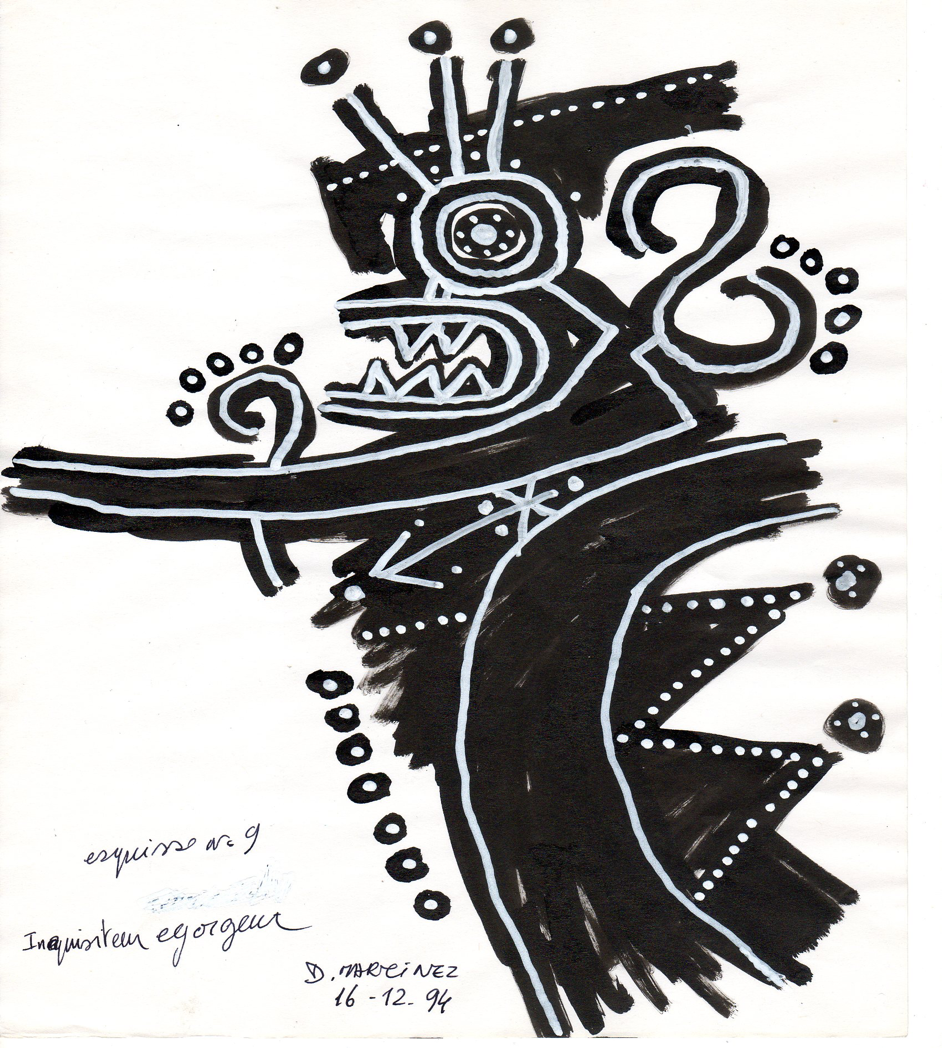
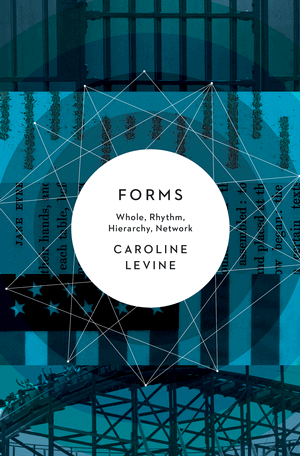
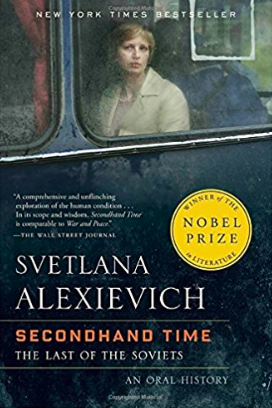


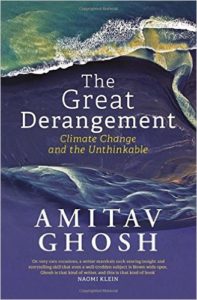 This review is the first in a three-part series on Amitav Ghosh’s The Great Derangement. boundary 2 also published
This review is the first in a three-part series on Amitav Ghosh’s The Great Derangement. boundary 2 also published 

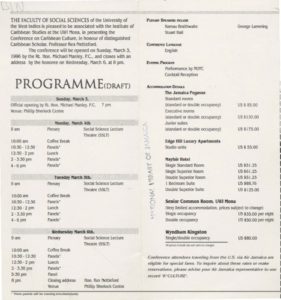
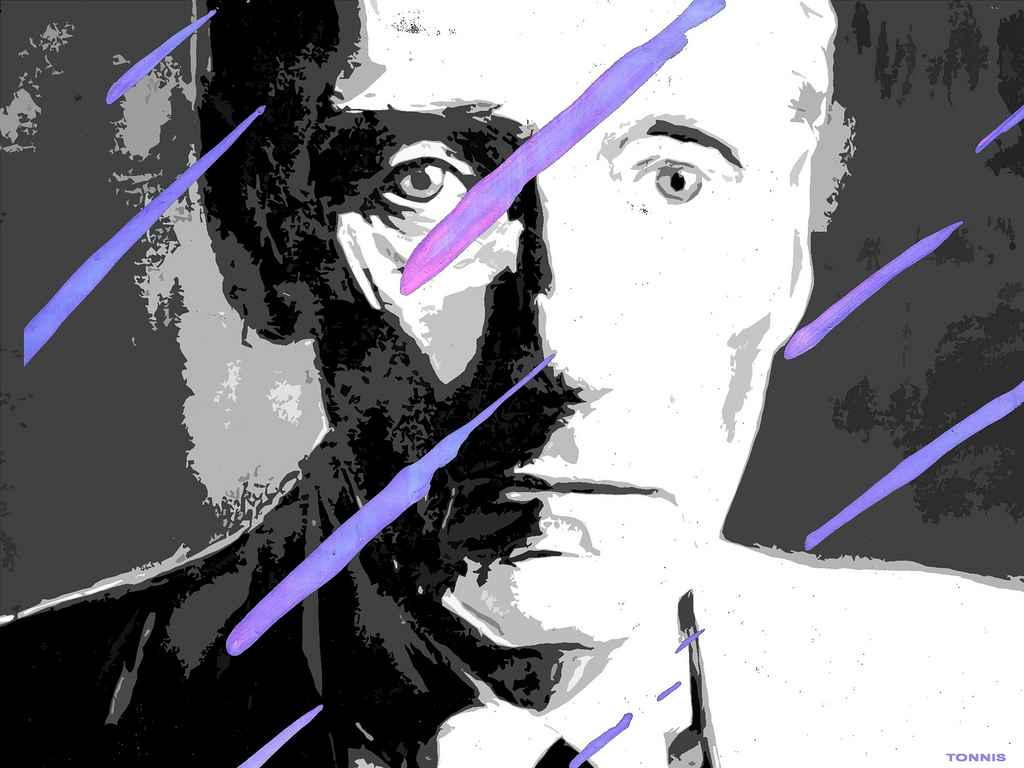

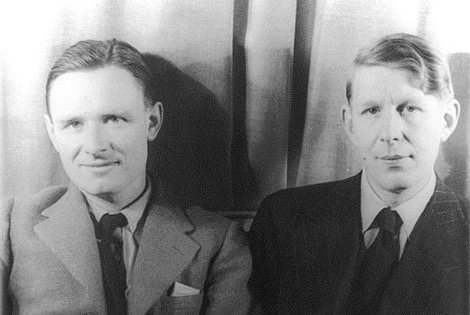
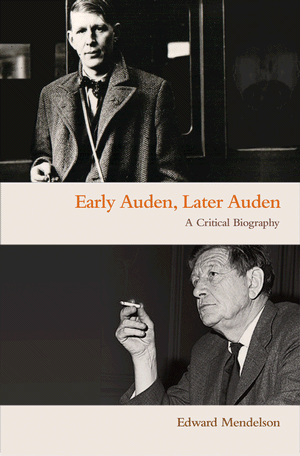 Edward Mendelson, Early Auden, Later Auden: A Critical Biography (Princeton UP, 2017)
Edward Mendelson, Early Auden, Later Auden: A Critical Biography (Princeton UP, 2017)